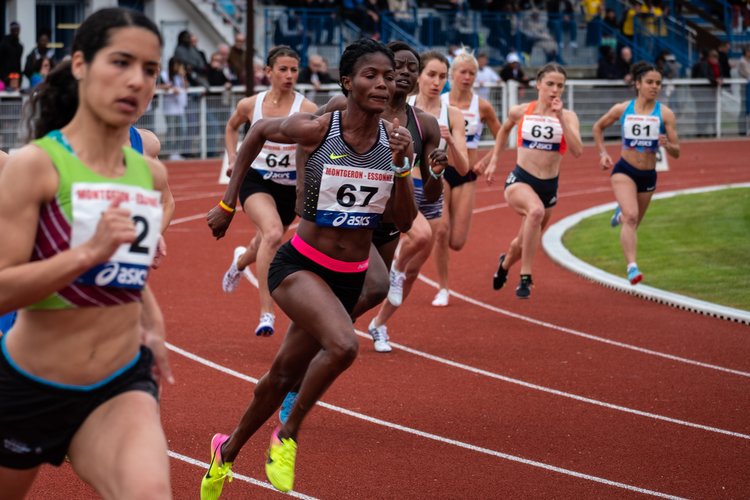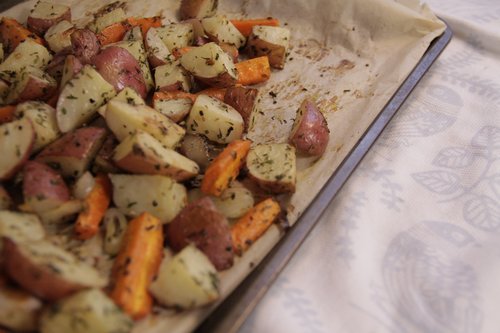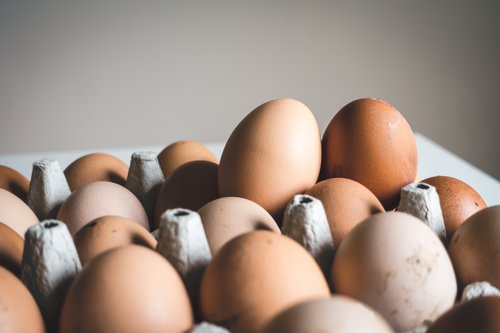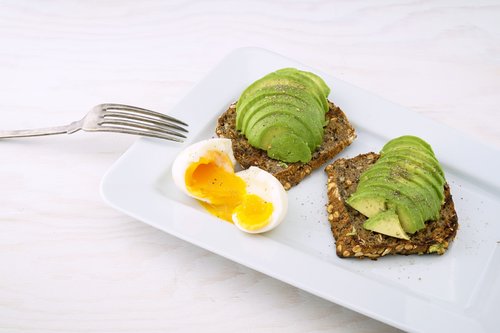Everyday nutrition choices can help take an athlete’s performance to the next level. By optimizing nutrition practices, athletes can boost physical and mental performance. For example, if your brain is deprived of good quality nutrition, you may not remember plays, react as quickly out on the field or even increase the accuracy of your shots while on the court. Getting a balanced blend of key nutrients on the daily, will help fill gaps in performance and recovery that can help improve endurance, increase time to exhaustion, delay the onset of fatigue while accelerating healing and repair.
Female athletes require more nutrients than non-active female counterparts. It can be challenging for some to accept, especially, for those participating in sports that place an emphasis on aesthetics, low body fat, or participate in a weight-class sport (examples include: gymnastics, dance, rowing, diving, figure skating and long-distance running). These athletes may often restrict to make aesthetic or weight goals.1

RISKS OF NOT CONSUMING ENOUGH/PROPER NUTRITION
Just like hard training and sufficient sleep, nutritional adequacy is also top on the list of ingredients that make an athlete exceptional. Inadequate nutrition can result in performance and health concerns such as low energy availability (inadequate energy intake to match exercise energy expenditure) which can lead to poor bone health (osteoporosis and fracture risk), fatigue, cardiovascular dysfunction, menstrual irregularities (prolonged time between period cycles or complete interruption of cycles) and injury.2,3,4
HOW MANY CALORIES SHOULD ATHLETES CONSUME?
While I try not to focus solely on numbers of calories during counseling, I still think it is important for female athletes to know that most of them need at least 2300-2500+ calories per day to maintain a healthy body weight. Depending on training intensity and duration, these needs may be adjusted by the registered dietitian. When intakes drop below optimal needs, it is difficult to obtain nutrients that are required to maintain good health, especially when expending high amounts of energy during training.5 Therefore, a well-balanced fueling plan that incorporates all macronutrients (heart-healthy fats, proteins, quality carbohydrates) should be encouraged.
HOW TO DETERMINE WHAT TO EAT?
One way to ensure that athletes are meeting nutrition adequacy is by using the plate method, created by the United States Olympic Committee Sport Dietitians and the University of Colorado (UCCS) Sport Nutrition Graduate Program.6 These plates are easy to follow and help athletes plan their meals based on daily training demands without eliminating any macronutrients.
EAT BASED ON YOUR TRAINING:
- LIGHTER TRAINING/ OFF DAY: The “easy training plate”, which is recommended for days with lighter training or off days. This plate is also ideal for athletes who participate in sports with a lighter training loads.6 The Plate: consists of ½ of the plate fruit/veggies, ¼ of the plate a lean protein source, and ¼ of the plate a starch.
- TWO A DAY (1 SKILL SESSION + 1 ENDURANCE SESSION): The “moderate training plate”, is used for two a day training, that focus on technical skill during one session and endurance at the other.6 This plate is commonly used as a baseline plate where athletes can adjust intake up or down depending on shifts in training load.The Plate: ⅓ of this plate consists of starch, ⅓ fruits/veggies and the other ¼ a lean protein.
- TWO A DAY (2 HIGH INTENSITY PRACTICES/ COMPETITION DAY): The “hard training or race plate”, is great for days with two high intensity practices per day or are gearing up for competition. The Plate: The hard training plate increases starch portions to meet ½ of the plate, while ¼ of the plate includes a lean protein and the other ¼ fruits/veggies.
The major difference between these training plates is adjusting carbohydrates coming from starches and those from fruits and veggies based on exercise intensity or duration.
UNDERSTANDING CARBS:

Carbohydrates found in fruits, dairy, vegetables and starches are your body’s main energy source for both the brain and body, especially, during intermittent high-intensity and prolonged endurance exercise.7 Making sure adequate carbohydrates are consumed before, during and after training will help athletes keep storage sites (also known as glycogen) sufficiently full in the muscle and liver, which will help stabilize energy and prevent muscle breakdown. This is why it is also important to not skip meals and eat consistently throughout the day (every 3-4 hours) as carbohydrates are needed to replenish and maintain these storage sites to get athletes ready for performance and to optimize recovery.8 Female athlete needs can range anywhere from a minimum of 3-12 gm/kg/day depending on sport and level of intensity.8 Using the performance plate method addressed earlier is one easy way to meet carbohydrate goals at meals. Quality carbohydrates are sources that contain a good source of fiber with at least 2.5 gm or 10% of the DV per serving.9
Examples: Performance-favorite carbohydrates includes sweet potato, rice, pasta, popcorn, fruit, whole-wheat bread, oatmeal, whole-wheat crackers, sports drinks for before and during training, and granola.
UNDERSTANDING PROTEIN:

No matter what your sports is, the body also needs protein to recover from training. In addition, protein helps to build muscle and keeps the immune system strong. Not getting enough protein can decrease muscle protein synthesis after workouts. Athlete’s needs are 1.2-2.0 gm/kg/d,8 depending on sport and performance goals. It is easy to meet daily goals by using your palm as a measure of about 3-5 oz of lean meat which equates to about 21-35 gm of protein. To get the most out of your protein intake, it is recommended to distribute amount of protein evenly throughout the day rather than getting your day’s worth in just one sitting!8 Protein sources are best paired with carbohydrates at meals and snacks.
Examples: Performance-favorite proteins include eggs, fish, chicken, turkey, dairy and plant-based proteins like lentils, edamame, tofu, black beans and quinoa.
UNDERSTANDING FATS:

Fats are another major fuel source for athletes. Heart-healthy fats help protect organs, decrease inflammation in addition to absorbing fat-soluble like vitamins A and D which are known to protect vision and bone health. In my experience, when working with female athletes, carbohydrates and fats are almost always limited when following restrictive diets. By restricting any of these macronutrients, athletes are at risk of nutritional deficiencies in addition losing additional energy that could be used during training.
Examples: Heart healthy fats include mono and polyunsaturated fatty acids like avocados, olive oil, walnuts, pistachios, chia and nut butters.
The main goal for female athletes should be nutritional adequacy to meet demands for both health and performance. Carbohydrates, proteins and fats each play a vital role in helping optimize athletic performance by stabilizing energy, preventing fatigue, boosting recovery while decreasing health consequence and risk of injury.

